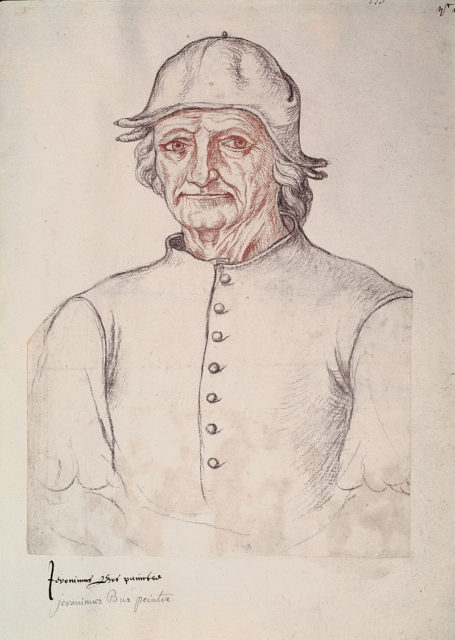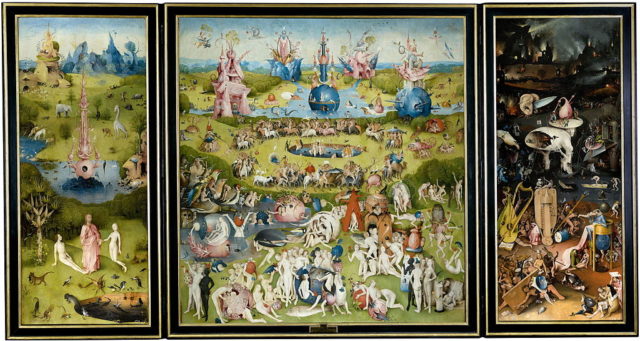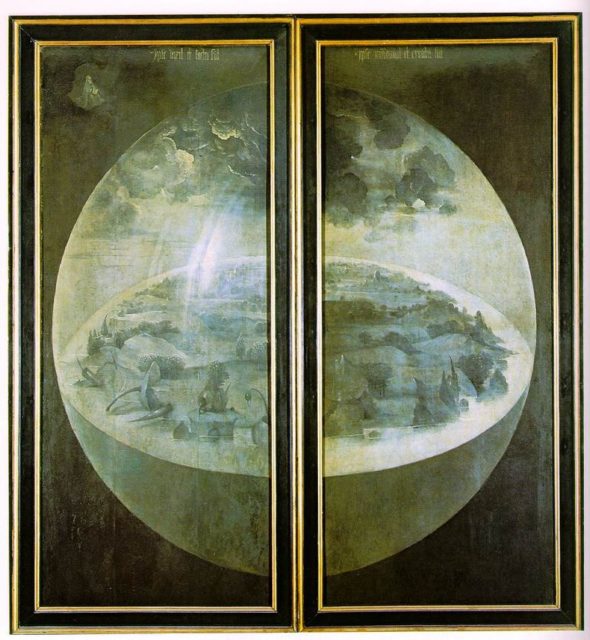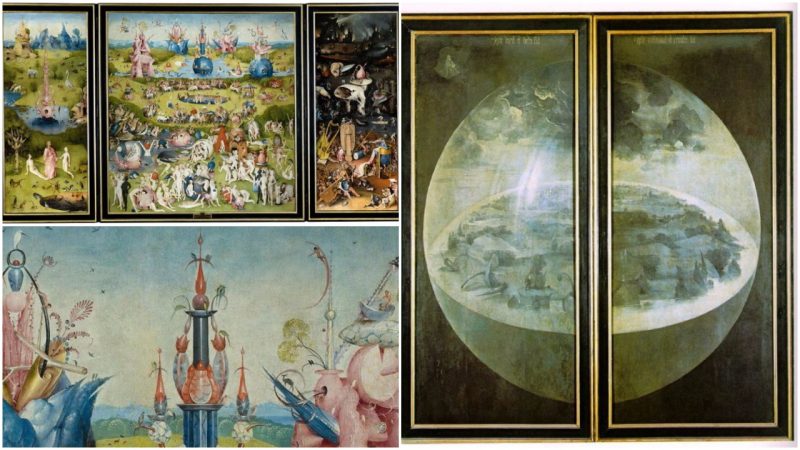Hieronymus Bosch is one of the leading representatives of the Early Netherlands painting school that was active during the Renaissance period in the 15th and 16th century.
His incredibly detailed paintings are known for their mysterious and obscure imagery that features various imaginary spaces and characters that are often downright frightening; contemporary art historians disagree over the intrinsic meaning of Bosch’s cryptic symbolism.

The Garden of Earthly Delights is a triptych painted sometime between 1490 and 1510, and it is one of Bosch’s most recognizable works. This form of the triptych is typical for paintings that were made to be used as altarpieces, but it is more likely that the client who ordered this artwork was a layman, since the painting’s imagery was overtly graphic to be displayed in a church.
The left panel depicts a serene and peaceful atmosphere of the moment when God presented Eve to Adam. The right panel features a complete opposition to the left panel; it depicts a dreadful hellscape of fire and darkness in which sinners are tortured and devoured by horrible mutants and surreal creatures.

The central panel is a subject of discussion among contemporary art historians because its imagery is quite unclear. Some claim that it is intended to serve as a moral warning for humankind, while others claim that it depicts a detailed panorama of paradise lost.

Many people are familiar with The Garden of Earthly Delights, but only a few are aware that the outer panels of the triptych can be closed to reveal another painting, one that was painted on the exterior side of the panels.
The exterior painting features Earth in one of the stages of its creation according to the Bible. The Earth is depicted as suspended in a lone crystal bubble in the vastness of the universe, and the figure in the upper left corner depicts God who created the world.

The colors of the exterior painting are extremely bleak and they contrast the vivid colors of the interior triptych because the exterior painting represents a work in progress, a project that is yet to be finished.
Bosch’s paintings are generally considered as extremely enigmatic, and there is no consensus on their meaning. Their imagery departs from the usual conventions of the Early Netherlands painting school, and some even speculate that it depicts fragments of esoteric knowledge that was lost in time.
